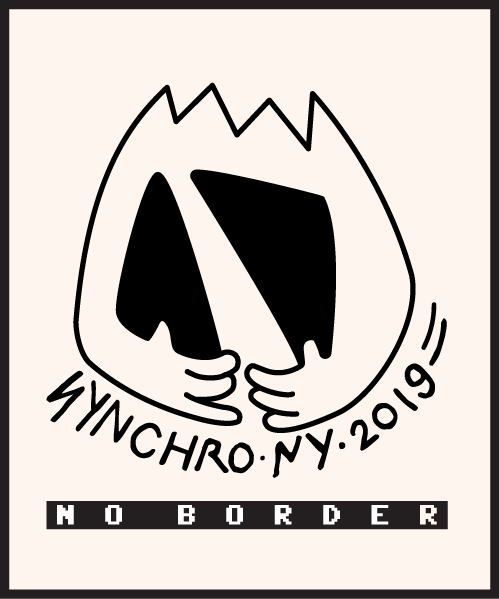


Algorave, Babycastles, 145 West 14th Street, downstairs/en bas
New York City ($15-20, Doors 7pm, ends 11pm) Jan 11
Amtrak Train 69,
New York City (8:15am) —— Montréal (7:11pm) Jan 12
Compos & Prizes/Prix, Shopify, 490 Rue de la Gauchetière O
Montréal (right after train arrival/immédiatement après l'arrivée du train) Jan 12
Synchrony is a DEMOPARTY that begins in NEW YORK CITY, continues on an Amtrak train, and concludes in MONTREAL.
Synchrony is about being creative with computers, and seeing how computers can produce amazing sorts of animation, graphics, music, and other experiences. At the end we have COMPOS (competitions) that are voted on by those who are there at the party. Some people may work on their entries for these compos for months beforehand; some, just on the train ride up. People are welcome to enter remotely, even if they are unable to attend.
We encourage work on today’s computers and older computers. (And you don’t have to restrict yourself to the Commodore 64, if you use an old computer.) As is usually the case in the demoscene and with demoparties, we build on the positive force of constructive, old-school hacking, encouraging deep engagement with how computers function. This can mean programming them at low levels, for instance, and being aware of how soundchips and character sets work.
We believe this type of creative engagement should be undertaken by everybody, and we have developed competition categories to welcome a diverse group of people and invite all of you to produce radical, exciting work.
The party was held previously in 2016 (just in NYC), 2017 and 2018. Check out the PHOTOS from last year!
January 11, evening, NYC. An Algorave is an event where people live code music and visualizations — that is, program them right on stage. You are supposed to dance! Venue and specific performers to be confirmed; performers will be from LiveCode.NYC.
To get from New York to Montréal with the group on the TRAIN TRIP, you should buy a ticket on train 69 on January 12, 2019. Go to Amtrak.com to purchase a ticket. Then, regsiter with us so we know who is coming and can look for everyone at the train station.
ONE-WAY: Select 2019-12-01 as the date and if you would like a one-way ticket just click the "Find Trains" button. There is only one train going from New York City to Montréal that day, the Adirondack, train number 69, departing at 8:15am and arriving at 7:11pm. If you live in New York City and are returning from Montréal some other way (bus, getting a ride, plane, etc.) or if you live in Montréal but will already be in NYC before the party, this one-way trip is what you want.
ROUND-TRIP: Those who attend are likely to wish to book a round trip, either Montréal-NYC-Montréal (if starting from Montréal) or NYC-Montréal-NYC (if starting from NYC). There is no discount for round-trip travel on Amtrak; a round-trip ticket costs the same as two one-way tickets, but it saves time to book both at once.
Right after you have bought a ticket on Amtrak train 69, we ask that you PLEASE submit information to us here so we have the best possible chance to find everyone at the station and manage the whole event.
People coming along can talk, use computers, buy and consume food & drink including alcohol, and generally enjoy themselves — just follow the usual norms of behavior and don’t bother other passengers or the crew! There are power outlets; be aware that the power quality is not good and at times the power may cut out entirely. There is wifi, but the quality of wifi is also not great. At times one can get a cell phone signal, but even this is not available everywhere along the route.
Since this is a party: Alcohol may be consumed, responsibly, by those who are of age in NYC, on the train, and at Shopify during the compos. The Amtrak cafe car has food and drink, including alcohol, available for sale. However, because the train is US-based there are no alcohol sales during the final part of the trip that is in Canada.
The trip involves a border crossing, so appropriate documentation (a passport) is required and will be checked before boarding. Please check the information on the Amtrak site, and other official information if necessary, to ensure that you will be able to cross the border. There is a customs inspection at the border and officials check the documents of everyone on the train. It takes a while.
Once in Montréal we will head immediately to the competitions or COMPOS, hosted at Shopify, a short walk from the train station. There is no charge to get into the compos, but there will be an opportunity to purchase food for delivery there ahead of time.
At some classic demoparties, people stay overnight at the party, for instance in a sleeping bag, all weekend. This won’t be possible at Synchrony. Both venues (Babycastles and Shopify) will close. Enjoy the fact that accommodations are cheapest around the end of January in both New York and Montréal!
The organizer of the compos is Luis and his decisions about the compos are the final ones.
Submit only work that you yourself have done, individually or collaboratively, and which has not been previously released. Some previously released material may be incorporated in a significantly new production. The compos organizers will ultimately determine how much material of this sort is allowed, and should be consulted if there is any question.
Everything entered in any compos, unless it is disqualified, will be spread — that is, made available for free download online. Don’t enter work unless you want to share it at the party and beyond! All entries that are included on the ballot will be released/spread as soon as is practical.
HERE IS HOW to submit remote and local entires: GO TO THIS SITE, create an account, and SUBMIT your ENTRIES. The deadline is 6pm Saturday January 12.
Remote entries are allowed, but will have an earlier deadline, to be specified.
Imagery or other content that is illegal, egregiously hateful or offensive, or otherwise unsuitable the environment of a demoparty will be disqualified and will neither be shown nor appear on the ballot. We respect that productions can have different sorts of content, and that people may wish to make strong statements of various sorts; please, also respect that we are having a fun party. The organizers’ decisions will be final.
Entries must be either entirely original or use only officially licensed or public domain content, with adequate documentation provided to the compos organizers. Ripped music and video, for instance, is not allowed unless permission has been granted for its use.
Because this is an all-ages event or for other reasons, the compos organizers may use their judgment and choose not to screen some productions. The compos organizers may also skip lengthy parts of demos, such as scroller sections, once the relevant effects have been demonstrated. Given the format of the party, which has the compos, voting, and prize-giving in a single night, this would prevent voters from considering the previous sorts of entries and prevent them from seeing entries in full before they vote.
A particular compo may be either be canceled or (more likely) combined with another compo if there are few entries. On the other hand, the organizers may split entries into new categories (such as a separate WILD and GAME category, or separate 4KB and DEMO categories) if there are a larage number of entries of each sort. If you wish to withdraw your production from a compo that is being combined or split, you may. In the event of a withdrawn production or a canceled compo, you are of course welcome to release your productions elsewhere, later.
While this is an international party, it is also a local party. There will be no guaranteed, high-end "compos machine." You will be responsible for being able to run your demos on hardware you bring or that you arrange to be at the party. You can contact the compos organizers or others to see about borrowing hardware with particular operating systems installed. Some retro hardware will be along for the trip, and at least one computer with a high-end graphics card is likely to be brought by the organizers on the train. Essentially, though, you need to be able to run your production on a computer you bring and you should not rely on a particular demo machine of a certian spec being available.
For Demo, Nano, and Old-School entries we ask for a video of the production. Please make it an mp4 file with h.264 video (30fps, Main Level <=4.1, two pass encoding, either 1280×720@>=3mbps or 1920×1080@>=6mbps) and AAC audio (stereo, at least 128kpbs). Don’t put it in your release archive. If it is not possible for you to produce this, we will still accept the entry as long as we can run it on hardware at the compos.
This is the classic category for spectacular executable audiovisual displays. Usually very recent hardware and a very recent operating system are assumed. State the graphics hardware your entry is compatible with on the submission form. Also declare the graphics settings you want used.
Maximum screening time: 7 minutes (including loading/precalc).
Pressing either ESC or Alt-F4 must end the demo instantly. The entry has to be delivered as single .zip or .rar file. To check the demo, we will not install any additional redistributable packages. It’s good to be sure that any additional DLLs are packed into your release.
This category is not unique to Synchrony, but has become closely associated with the party.
Maximum file size is 256 bytes for the executable. Entries are allowed in standard interpreted languages that are standard with the OS, free software, or freeware (e.g., JavaScript, Perl, Processing, BASIC, QBasic). If the nano is for an interpreted language, the source file is limited to 256 bytes. If you wish to write an esoteric language custom-made to play your 256b production, that will be Wild! It will not, however, be Nano. (That is, a language you wrote yourself for this compo is not suitable for this compo.) All other files in the archive will be deleted before showing the entry in the competition.
Maximum screening time: 7 minutes (including loading/precalc).
You may deliver bigger versions of the 256b along with the compo version (which must be <=256 bytes) in the same archive. We will not show any larger version in the compo and voting should be on the <=256 byte version.
For executables we will not install any additional runtimes, SDKs, codecs, drivers etc on the compo machine. For interpreted programs we will not install any libraries, and we will use the current stable version or a current stable version in the case of languages such as Python for which there are more than one stable version (2/3). This means that, among others, msvcr70.dll, msvcr71.dll and msvcr80.dll will not be available. You may not use the contents of the Windows “Media” or “Music Samples” directories. These directories will be deleted on the compo machine. Import by ordinal for DLLs with non-fixed ordinals is forbidden; so is directly jumping into DLLs with hardcoded offsets.
Allowed platforms are those from before 1992 in which the CPU has no data bus exceeding 16 bits (Atari VCS, VIC-20, C64, Amiga ECS, Atari ST, NES, SNES, Game Boy, Master System, Mega Drive, ZX Spectrum).
Maximum screening time: 7 minutes (including loading/precalc).
Maximum size is 1 standard medium for your platform. For example: 1 disk (both sides on single-side media) on VIC-20, C64, Atari ST; 1 cartridge image for NES, Master System. The entry has to be delivered as a disk or cartridge file (strongly preferred).
Please contact us beforehand if you are going to use any platform that does not produce a VGA or NTSC signal, and bring a recording of the production running in this case. Remember that providing your own recording does not mean we don’t need to see the real hardware or evidence of the demo running on it. If entries cannot be projected from real hardware, you must deliver adequate proof that your entry works on real hardware. You can do this, for instance, by bringing the hardware with you and showing the organizers, or by providing a video that shows the program running on hardware and is not just a screen capture.
Pressing the standard ESC-like key (such as STOP on the Commodore 64) must stop the demo instantly. Demos should load so they can be RUN in a standard way (on the C64, for instance, loaded at $801 with a BASIC program to jump to the demo via SYS).
Like the Joker, this category is wild. Games and other interactive programs are welcome in this category, along with programs that run on custom (rather than standard) hardware. You may not use fire, spill fluids, or generate unguarded arcs of electricity or potentially hazardous wavelengths of light. If your electrical entry needs to plug into the wall, make sure it runs from a standard 120V outlet without tripping the breaker. Test it beforehand. Other than that, please use your common sense and contact us with any questions. All entries must be demonstrated to the competition organizer before the deadline if requested.
Maximum screening/performance time: 7 minutes.
When applicable, submissions must include working binaries for the target platform, and you must prove that your demo works on real hardware/software.
Only one entry per composer and competition allowed. As is generally the case for all productions: Do not use any copyrighted material in your track.
Maximum playing time during the compo is 4 minutes, although the track itself can be longer.
Please submit an NFO file or ID3 tag along with the media as with as much detail as possible. This can include author, tools used and name of the song.
We particularly encourage PIXEL ART that engages the way computers use pixels to build images; CHARACTER GRAPHICS (such as ASCII, ANSI, and PETSCII) images; and EXECUTABLE graphics (computer programs that generate images).
Only one entry per artist and competition allowed.
As is always the case, your entry must be new work that has not been released previously. Also, if you have posted any work in progress images in public anywhere, your entry will be disqualified. You may not use photos or other source images in the production itself that you do not have the rights to use.
Maximum resolution is 1920×1080 pixels. If the image is smaller, please include an upsampled version in your submission while preserving the aspect ratio! If the image is smaller than 1920×1080 pixels, we will display it with black borders around the image as necessary.
Maximum filesize for your final picture is 20 megabytes.
The entries will be shown once on the big screen and uploaded to the party site after the compo, so visitors can judge the entries on their own screens.
You must include exactly 4 (four) working stages together with your final version – the entry. All entries without plausible looking working stages will be disqualified. The working stages must have the filename “step1.???”, “step2.???”, “step3.???” and “step4.???”, where ??? is the extension of whatever format you use. Please put your 4 working stages into a seperate folder in your zip archive!
When uploading your entry you must include a list of the tools used, to be displayed on the big screen. Only still images are allowed in this compo, no animations.
We are DOOM OF THE ROCK (Ramsey), EMiSpicer, Etienne, Luis, nom de nom (Nick), ohqueezy (Frank), The Opponent (Carl), and Vinicius. CONTACT the lead organizer if you need to: [email removed!]
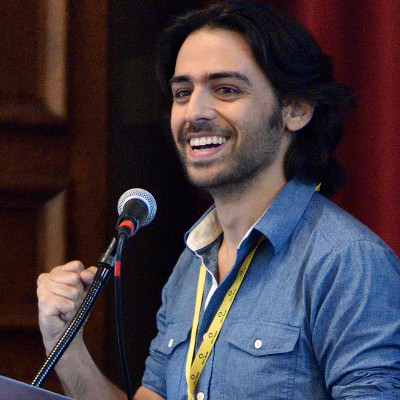 DOOM OF THE ROCK, a.k.a. Ramsey Nasser (Livecode.NYC liaison - NYC) is an independent computer scientist and artist fascinated by computers as tools of self expression. He develops programming languages to enhance human creativity, designs games to connect with people, and writes code live on stage with the Livecode.NYC collective. He also teaches others to do the same at the School for Poetic Computation.
DOOM OF THE ROCK, a.k.a. Ramsey Nasser (Livecode.NYC liaison - NYC) is an independent computer scientist and artist fascinated by computers as tools of self expression. He develops programming languages to enhance human creativity, designs games to connect with people, and writes code live on stage with the Livecode.NYC collective. He also teaches others to do the same at the School for Poetic Computation.
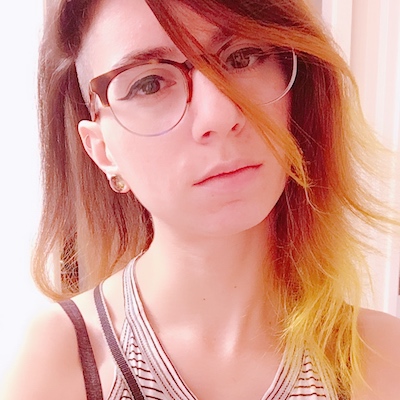 EMiSpicer (music & photography) is traveling freelance photographer documenting music, tech, art, and games culture ... including of course the demoscene! She is also an events organizer and, within the scene, has put together concerts for previous Synchrony parties and for @Party.
EMiSpicer (music & photography) is traveling freelance photographer documenting music, tech, art, and games culture ... including of course the demoscene! She is also an events organizer and, within the scene, has put together concerts for previous Synchrony parties and for @Party.
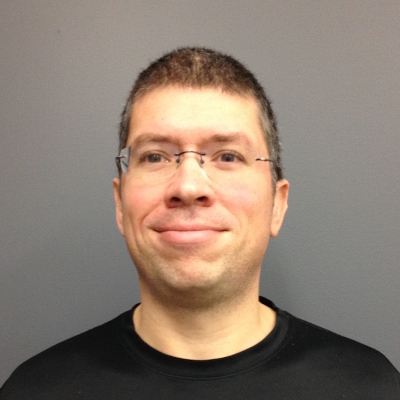 Etienne Caron (Shopify liaison - Montréal) loves working with 3D animation, procedural content generation, and VR. He is a lead developer at Shopify, a popular Canadian e-commerce company. He is also part of Google's Developer Expert program and an instructor for Caster.io Etienne has been an active member of the Android developer community in Montreal since 2010, and regularly devotes his time to mentoring startups, developers, and students in the mobile space.
Etienne Caron (Shopify liaison - Montréal) loves working with 3D animation, procedural content generation, and VR. He is a lead developer at Shopify, a popular Canadian e-commerce company. He is also part of Google's Developer Expert program and an instructor for Caster.io Etienne has been an active member of the Android developer community in Montreal since 2010, and regularly devotes his time to mentoring startups, developers, and students in the mobile space.
 Luis (compos organizer - NYC) has directed the compos at Synchrony twice (2016 & 2017) and at Boston-area demoparty @party many times. His own winning demos include ones for overhead projector and oscilliscope.
Luis (compos organizer - NYC) has directed the compos at Synchrony twice (2016 & 2017) and at Boston-area demoparty @party many times. His own winning demos include ones for overhead projector and oscilliscope.
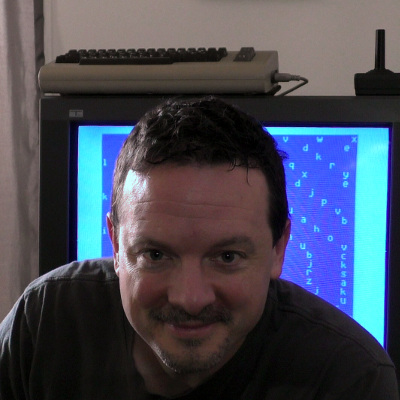 nom de nom, a.k.a. Nick Montfort (lead organizer - NYC & Boston) codes very small productions for the Commodore 64 and other platforms, often as poetry. His six MIT Press books include two collaborations, Racing the Beam and 10 PRINT CHR$(205.5+RND(1); : GOTO 10, about the Atari VCS and the Commodore 64. He’s also author of seven computer-generated print books, editor of the Using Electricity computer-generated book series (Counterpath), and co-editor of the Platform Studies book series (MIT Press). He teaches at MIT and the School for Poetic Computation.
nom de nom, a.k.a. Nick Montfort (lead organizer - NYC & Boston) codes very small productions for the Commodore 64 and other platforms, often as poetry. His six MIT Press books include two collaborations, Racing the Beam and 10 PRINT CHR$(205.5+RND(1); : GOTO 10, about the Atari VCS and the Commodore 64. He’s also author of seven computer-generated print books, editor of the Using Electricity computer-generated book series (Counterpath), and co-editor of the Platform Studies book series (MIT Press). He teaches at MIT and the School for Poetic Computation.
 ohsqueezy, a.k.a. Frank DeMarco (Babycastles Liaison - NYC) designs and codes games as well as demos; among the many he’s created are Line Wobbler Advance, a GBA port of one-dimensional Line Wobbler that was entered at last year’s Synchrony. He transmits the origin of the universe through his vessel at a frequency that recalls the primordial ooze and heralds the age of the Sun. He lives in a small room with his microwave.
ohsqueezy, a.k.a. Frank DeMarco (Babycastles Liaison - NYC) designs and codes games as well as demos; among the many he’s created are Line Wobbler Advance, a GBA port of one-dimensional Line Wobbler that was entered at last year’s Synchrony. He transmits the origin of the universe through his vessel at a frequency that recalls the primordial ooze and heralds the age of the Sun. He lives in a small room with his microwave.
 The Opponent, a.k.a Carl Therrien (French Canadian Liaison - Montréal) is a demoparty dilettante, cheerleader of kusoge games on the PC Engine (and author of the forthcoming MIT Press book on the topic), and game studies professor at Université de Montréal. He grew up as an Amiga fanboy spending more time gazing at cracktros than playing the lousy, overly difficult games. He is the guy cheering in the back (in both languages).
The Opponent, a.k.a Carl Therrien (French Canadian Liaison - Montréal) is a demoparty dilettante, cheerleader of kusoge games on the PC Engine (and author of the forthcoming MIT Press book on the topic), and game studies professor at Université de Montréal. He grew up as an Amiga fanboy spending more time gazing at cracktros than playing the lousy, overly difficult games. He is the guy cheering in the back (in both languages).
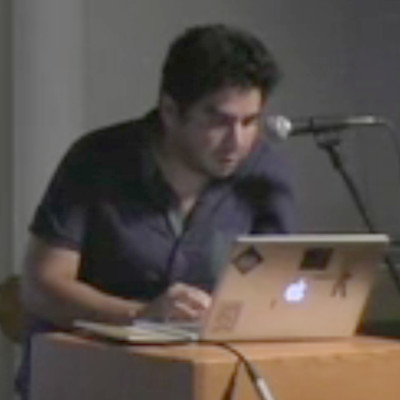 Vinicius, a.k.a Vini (logo design), un chilango, ¡hizo el SYNCHRONY logo! Muchas gracias, amigo y transgresor de fronteras.
Vinicius, a.k.a Vini (logo design), un chilango, ¡hizo el SYNCHRONY logo! Muchas gracias, amigo y transgresor de fronteras.